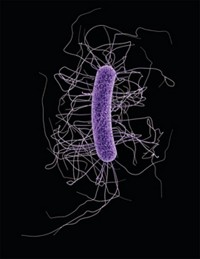Advertisement
Grab your lab coat. Let's get started
Welcome!
Welcome!
Create an account below to get 6 C&EN articles per month, receive newsletters and more - all free.
It seems this is your first time logging in online. Please enter the following information to continue.
As an ACS member you automatically get access to this site. All we need is few more details to create your reading experience.
Not you? Sign in with a different account.
Not you? Sign in with a different account.
ERROR 1
ERROR 1
ERROR 2
ERROR 2
ERROR 2
ERROR 2
ERROR 2
Password and Confirm password must match.
If you have an ACS member number, please enter it here so we can link this account to your membership. (optional)
ERROR 2
ACS values your privacy. By submitting your information, you are gaining access to C&EN and subscribing to our weekly newsletter. We use the information you provide to make your reading experience better, and we will never sell your data to third party members.
Environment
Antibiotic Resistance
August 1, 2011
| A version of this story appeared in
Volume 89, Issue 31
Rudy Baum’s editorial “None Too Bright” was right on target regarding the problem of antibiotic resistance development in the intestinal microflora of farm animals fed with growth-promoting levels of antibiotics (C&EN, June 6, page 5).
In the late 1960s, I was principal investigator of a Department of Agriculture-funded pilot study on chlortetracycline resistance in enteric microorganisms in chickens and swine at Battelle Memorial Institute.
The results of this study clearly indicated statistically significant increases in the chlortetracycline-resistant bacteria in the enteric flora of those animals fed with this antibiotic over the numbers of resistant bacteria present initially and over those in separately housed control animals. Furthermore, chlortetracycline resistance was transferred from a resistant strain of Escherichia coli isolated from chickens to a sensitive strain of the intestinal pathogen Salmonella typhimurium in gnotobiotic (germ-free) mice.
These results were presented in a seminar at the USDA Beltsville Agricultural Research Center that was attended by both USDA and Food & Drug Administration scientific staff members who agreed that this was a start but further action was needed. A follow-up paper was presented at the 1970 annual meeting of the Society for Industrial Microbiology and was published in “Developments in Industrial Microbiology” (Washington, D.C.: American Institute of Biological Sciences, 1971, Vol. 12, 376–391).
Numerous studies since that time have shown the importance, from a public health standpoint, of the rise of antibiotic-resistant pathogenic bacteria in the environment. Why has nothing been done after more than 40 years? As Baum points out, although the European Union has banned such uses of antibiotics, FDA has waffled on taking any action, undoubtedly owing to the influence of politically powerful agribusiness interests. Do we have to await a public health crisis before taking action on this problem?
By John H. Litchfield
Worthington, Ohio



Join the conversation
Contact the reporter
Submit a Letter to the Editor for publication
Engage with us on Twitter